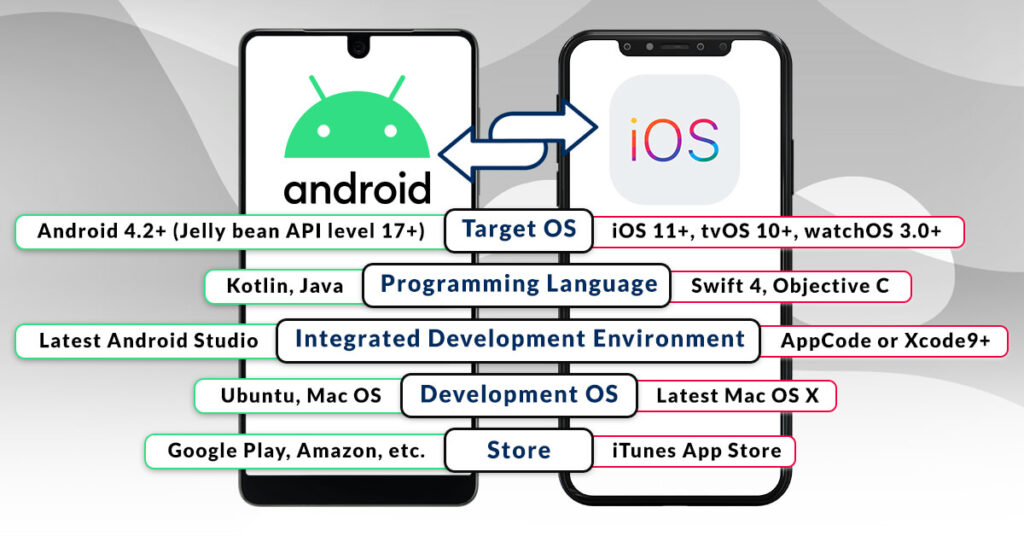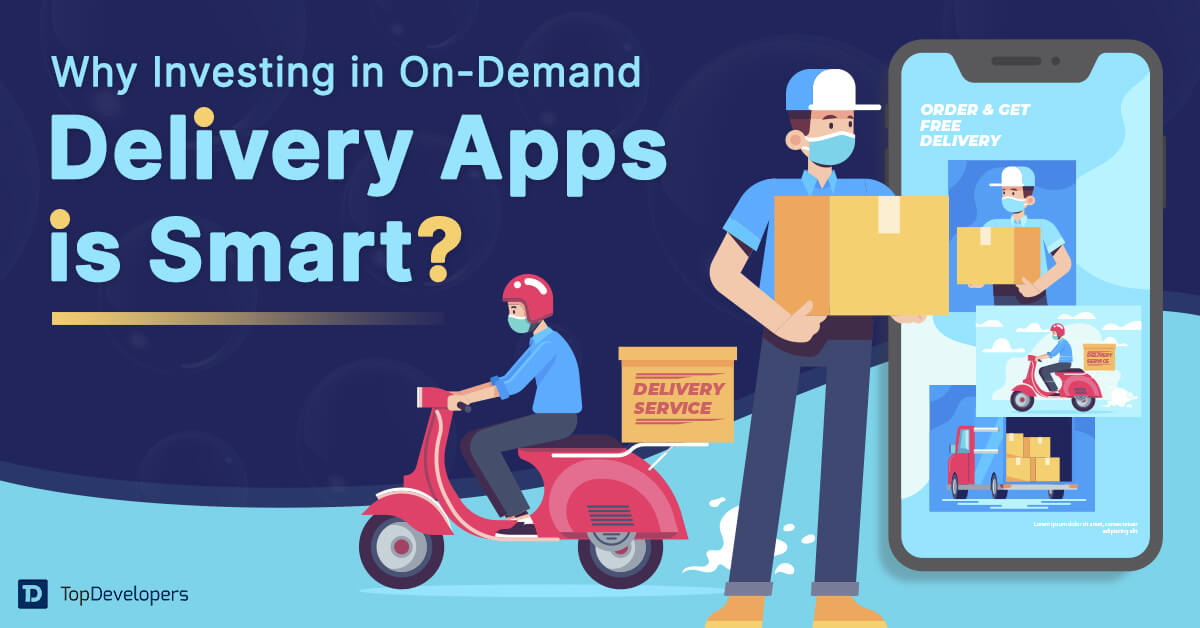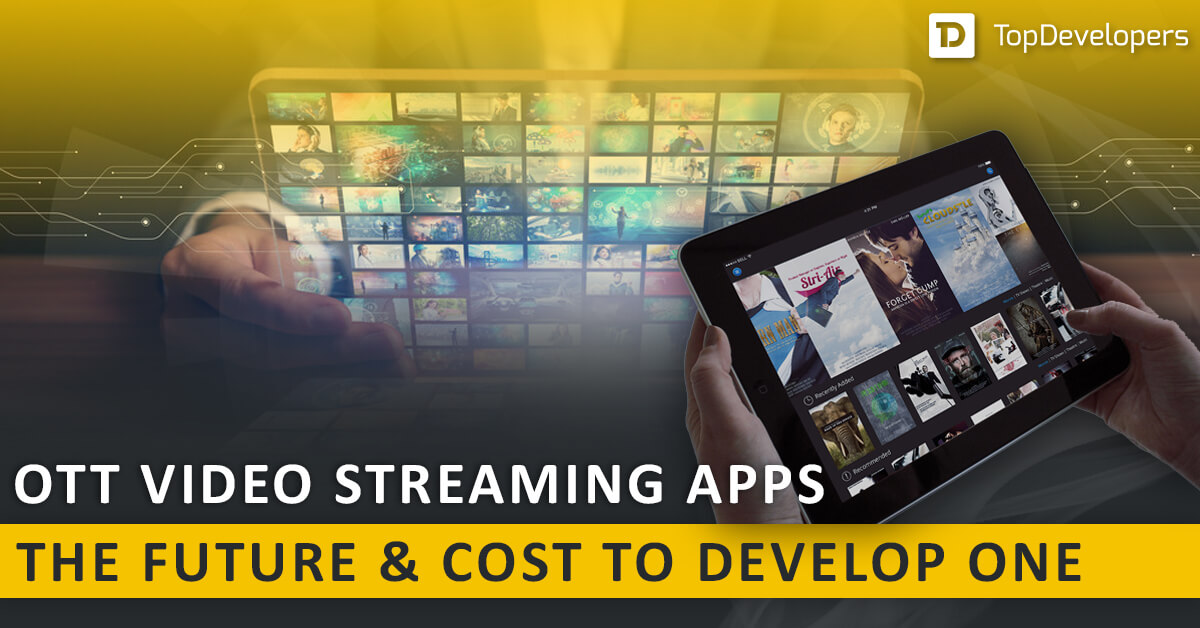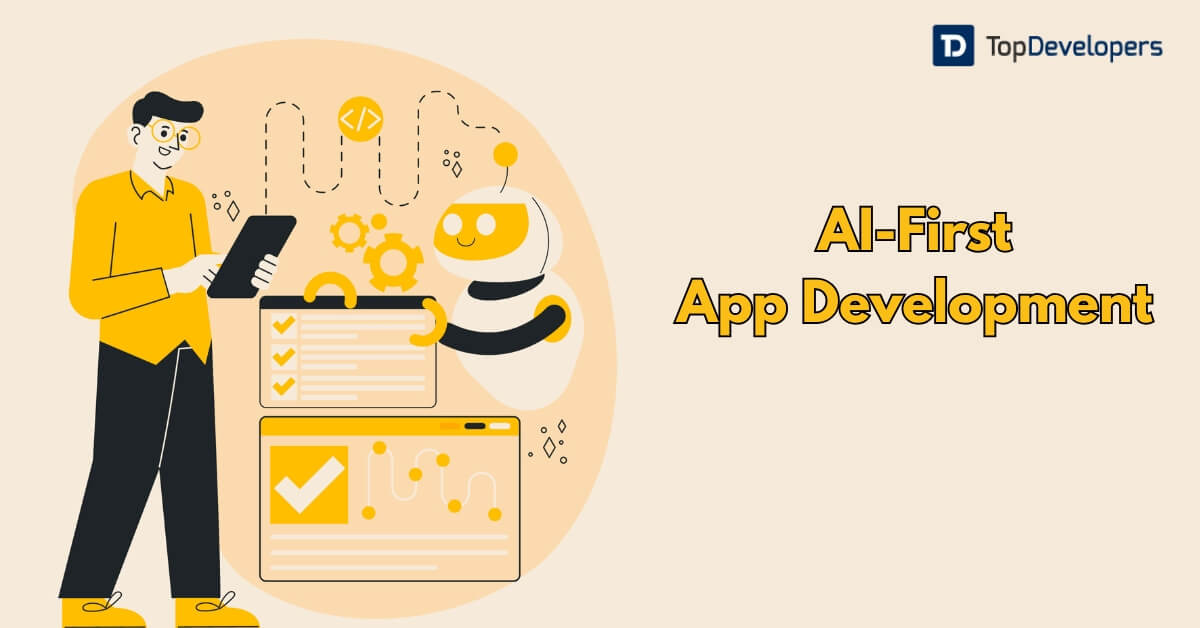
If you are searching how to convert the Android app to iOS, you are looking to expand your business which is a good space to be in. And given the fact that iOS users have more spending ability than Android users, the platform conversion decision is a smart one. But here, businesses should also understand that it is not easy to convert Android to iPhone, as is the case for Android APK to iOS conversion.
But you might be thinking; Android apps have the biggest market share, so why are we saying that converting Android to iOS is a good marketing decision? The answer to this lies in the spending power of the iOS users, which is significantly higher than the Android users.
Now, when as a business owner, you decide to convert the Android app to iOS, there will be a lot of questions that will creep in. How tough will it be to convert the app? Where should you begin with? What are the concrete steps to convert Android to iOS? Etc. But as an entrepreneur, you must also remember that leading applications like Instagram and Airbnb too began as a single platform application and then escalated their way ahead.
Therefore, this blog will help understand the concrete steps to convert Android apps to iOS. Moreover, we will also understand why it is beneficial for business organizations to follow this route of converting app platforms.
Table of Contents
- Why is converting an Android app to iOS a good idea?
- Android Vs. IOS Key Differences
- The thing to consider when Porting an Android App to iOS
- How to convert Android app to iOS: A four-step process
- Cost to Port an Android App to iOS
- Additional tip: iOS to Android app conversion
- List of common mistakes to avoid
Why is converting an Android app to iOS a good idea?
Before beginning the app porting process, it is necessary to have an explicit explanation behind it. Whether it is to convert Android to iPhone or vice-versa, the process must have a clear explanation; otherwise, it will not achieve the desired results. So if the app conversion process depends on the following factors, it becomes a success.
Research the existing market
Businesses need to understand what their target audience specifically wants. So if most of the audience use either Android or iOS platforms, there is no point in converting Android to iOS or vice versa.
The business organization then can do in-depth research based on the users’ geo-location. Because of the in-depth market research, the business houses would know whether it is beneficial to follow the process of converting Android to iOS.
Analyzing the app indicators and metrics
Along with analyzing the needs and wants of the target customers, the decision to convert Android to iOS should also be dependent on hard facts and countable metrics. For example, business organizations must look at the number of active users and sufficient downloads to make a call.
These indicators will bring forward the true reality of the market and allow the businesses to think in a broader sense and then make an informed decision.
Android Vs. IOS Key Differences
Android and iOS are two major operating systems that have gained a higher share of the market as compared to other operating systems. Before jumping on the conversion bandwagon of the Android app to the iOS platform, it’s essential to identify the differences between the two OS for knowing the decision for conversion is right or not.
OS version fragmentation
Both operating systems are updated multiple times in the last decade to render the best experience to the users with new features, interface changes, and security enhancements. The app when launched must support the latest OS of the respective platform, but all the users are not willing to change the mobile device as the OS version upgrade.
It’s found that Android users do not willingly update the latest OS or buy the mobile devices with the latest OS version. On the flip side, iOS users willingly upgrade the app to the latest to have the best experience. According to a study, 90% of Android users still use Android Marshmallow, Nougat, and Lollipop version, which is quite older versions whereas 92% of Apple users use devices starting with IOS 10 or later versions.
Different device screen sizes
In addition to OS version fragmentation, Android also suffers from device screen size fragmentation issues. Android devices come in 20 different screen sizes whereas Apple devices have a maximum of 4-5 device screen sizes. Making the app display glitch-free on every screen size is important, so considering device screen size is vital to consider before taking a conversion decision.
However, it’s not essential to make the app fit in 20 screen sizes. Instead, the support for screen resolutions by Android makes it enough for the app to fit in most used 5-7 screen sizes.
Buttons size and navigation
Device buttons vary from one operating system to another OS. The same is the case with Android OS and iOS platforms. For instance. Android devices have soft keys to move back and forth from one screen to another. On the other hand, iOS device screens have a back button and swiping left to right gestures to go back. It must be considered during conversion.
Taking a step further, the latest Apple and Android devices don’t have buttons. Instead, the devices provide horizontal and vertical elements to enable user interactions seamlessly. Remember, the Android interface includes vertical elements while the Apple device interface has both vertical and horizontal elements.
Language-specific aspects
The code translation stays at the core to convert iOS apps to Android apps or convert Android apps to iOS, wherein the selection of programming language plays a vital role due to associated syntax, algorithms, rules, and semantics that are unique for every language. The programming languages used for both mobile OS are different.
The functionality that’s performing brilliantly on one OS may not perform as expected on another platform. So, language decisions should be taken considering functionalities performance.
The thing to consider when Porting an Android App to iOS
For iOS to Android app conversion to take place smoothly and error-free, it is necessary to take care of certain things beforehand that are-
Keep the most used OS version in line
In contrast to Android OS, with every iOS update, a new iPhone device is released. Besides, as soon as a new iOS version is released, most users download the upgrade worldwide to enjoy the new additions and updates. When you are converting an Android app to iPhone app, consider the latest, stable iOS version to gain maximum user traction as 75% of iOS users uses the iOS 14 version.
Stay ready for a UI redesign
When porting an Android app to iOS or converting iOS to an Android app, the changes in UI design are obvious. Saying the whole design needs to change, a part of the design needs to change, or maximum design elements can be reused is implausible beforehand. The design elements including- buttons, icons, fonts, ratio, and more need to be identified and listed so that redesigning during the final conversion becomes a breeze. The top iOS app developers consider flat design guidelines and material design guidelines to figure out the redesign needs for app porting.
Right programming language selection
The full backward compatibility of Kotlin with Java language makes it the fastest, simplest, and smoothest to work with. Using Swift as the programming language for conversion to iOS app. Objective C and C# are also leveraged alternatively. Having Mac with macOS installed is essential for creating assets for the new iOS apps. The multiplatform capability of Kotlin presents a wide range of opportunities to convert iOS to Android. Hire remote developers that have expertise in languages for porting Android apps to iOS.
How to convert Android app to iOS: A four-step process
To convert Android to iOS, business organizations must follow a strategic process to achieve the desired results. Below is a detailed four-step process that will help organizations get a fruitful Android to iOS conversion.
1. App functionality and requirements
Many elements would be included in the existing Android application. Therefore, the client firm must hire from the mobile app development companies that give detailed attention to all the elements. Whether it is the application’s design, source code, or functional specifications, everything should be studied in detail to help align the app’s functionality and business logic.
Moreover, businesses must also take care of both perspectives, technical and business, while implementing the initial step to convert the Android app to iOS. Therefore, they must take the help of expert business analysts and software architects to perform this process tactfully.
From the technical point of view, here are some important points to consider:
- Understand the business logic and then apply it to the new project
- Important to check the app optimization and improvement possibilities
- Thoroughly check the compatibility with third-party frameworks
And from the business deliverables viewpoint, here are some important things to look at:
- Concrete market analysis
- Code and design review
- Understanding the list of features and their description
- Project mind gap
2. Design adjustment for app conversion
In-app porting, it becomes necessary to code from the absolute beginning. Therefore, logically speaking, the layout and the interface of the layout must be changed too. Moreover, businesses should not make the mistake of just copying the existing UI as it could break the look and feel of the converted app.
Here are some important app design aspects to look at:
Flat design patterns vs. material
IOS and Android OS platforms have different design patterns. Therefore, flat design patterns are required to convert Android apps to iOS apps. While on the other hand, iOS to Android app conversion requires material design. The material design is a more three-dimensional process, while the flat design patterns are direct in design.
UI design
Both Android and iOS have different User Interface (UI) components. Therefore, it is important to understand their differences in detail.
Design slicing for Android or iOS conversion
Before beginning the app development process, it is necessary to slice the app design into assets. This process helps the app development team put the relevant design to the code.
So when converting an Android app to iOS, the application design is sliced into 1x*pdf. Moreover, it is also necessary to understand that it is a vector format. So it can be resized as per requirements by the app developers to 2x or 3x.
URL mirroring
Understanding what kind of languages the app supports before porting it becomes crucial. The prime difference between right-to-left (RTL) languages and left-to-right (LTR) languages is the content’s direction. Therefore, when converting Android to iPhone, this becomes an important aspect.
Starting from Android 4.2 Jelly Bean, Android has built-in support for the RTL interfaces. Thus, it becomes easier to control the URL mirroring.
3. Architecture components and coding
When converting an Android app to iOS takes place, it becomes almost impossible to recompile the code. Apart from the programming language, the application utilizes third-party integrations, external solutions, and libraries. Therefore, it is necessary to check the compatibility of the Android application that will be converted with the given elements.
Moreover, when businesses hire from the leading Android app development companies or iPhone app development companies, they take care of the tech stack that assists Android to iOS conversion and reverse.
Tech stack to convert Android app to iOS or in reverse:

Along with the tech mentioned above the stack can use some third-party services to convert Android to iOS and reverse:
Social networks: Linkedin, Facebook, Twitter, Instagram, SinaWeibo+
Postal service: FedEx, EasyPost, etc.
Payment: Paypal, Braintree
Analytics: Crashlytics, Mixpanel, Google Analytics, Flurry
4. Testing the app and launch
It is necessary to have detailed and well-thought-out app testing to get the desired result from the app conversion process. Therefore, along with app design and coding, it is necessary to have quality assurance while converting Android to iOS applications or vice versa.
Below is the quality assurance engineers’ list of tests in terms of design interface, navigation, and code functioning.
- Usability testing
- Validation testing
- Control testing
- Security and access
- Functional testing
- User acceptance
- Load and performance testing
Moreover, as Apple’s app store has stricter guidelines for submitting the app, following the common software, tools, and devices for testing is recommended. Using the common tools will help the app to meet the specific guidelines.
Cost to Port an Android App to iOS
The cost of porting an Android app to an iOS app is nearly similar to building an iOS app from scratch. The reason being the conversion process includes technical and functional documentation that clearly defines how many developers’ hours will be consumed in the adaptation of new features, building the backend, meeting platform-specific design needs, architecture redesigning, future support and maintenance fuss, project management, and more.
Also, when you turn an app idea into reality, the selection of the tech stack is all-important. The same goes with Android app to iOS app conversion which brings changes in tech stack selection and ultimately impacts the time and effort consumption.
The project details help mobile app development company to find an exact estimate of the conversion cost. However, defining the ballpark cost ahead of knowing the conversion-related information is implausible. An average Android app conversion to iOS typically costs around $20,000 and cost surges based on a couple of factors that are-
- Architecture complexity that needs to redesign
- Number of third-party integrations
- UI/UX design changes
- Location and number of specialists required
- New features addition
- Modification in the tech stack
Additional tip: iOS to Android app conversion
For iOS to Android app conversion to take place smoothly, it is necessary to take care of the main Android design features:
- Material design
- Three main options: Home, Back, and Multitasking
- Device variety with different OS versions
List of common mistakes to avoid
The process of converting an Android app to iOS can be a tricky task. Therefore, business organizations must avoid these common pitfalls.
- Always check the app localization functionality.
- If there is a multi-language app, it is necessary to check the development works.
- Understand out of the work solutions thoroughly.
- Have an Apple and Google account beforehand.
- Check all possible backend system adjustments.
Final words
The bottom line is whether the business organization is looking to convert Android app to iOS or iOS app to Android, they must make the development time shorter. Moreover, it is also essential to look at the iOS app development trends and Android development trends before making the conversion process functional.
Finally, and as mentioned earlier, both the business and technical aspects should be given equal importance and convert Android to iOS skillfully.
Frequently Asked Questions
How to convert an Android app to iOS?
Converting an Android app to an iOS app is a simple process that developers execute in 4 steps that are-
- App requirements review
- UI design adjustment
- Coding and architecture components are modified
- App testing and launch
Do I need to hire developers to convert an Android app to iOS?
Yes, converting an Android app to iOS is quite similar to developing an app from scratch that requires tech experts on board. You need to hire developers for seamless conversion.
 Avantika Shergil
| Dec 20, 2022
Avantika Shergil
| Dec 20, 2022
Avantika Shergil is a technology enthusiast and thought leader with deep expertise in software development and web technologies. With over 8 years of experience analyzing and evaluating cutting-edge digital solutions, Avantika has a knack for demystifying complex tech trends. Her insights into modern programming frameworks, system architecture, and web innovation have empowered businesses to make informed decisions in the ever-evolving tech landscape. Avantika is passionate about bridging the gap between technology and business strategy, helping businesses build customized software and website, and understand about different tools to leverage effectively for their ventures. Explore her work for a unique perspective on the future of digital innovation.





